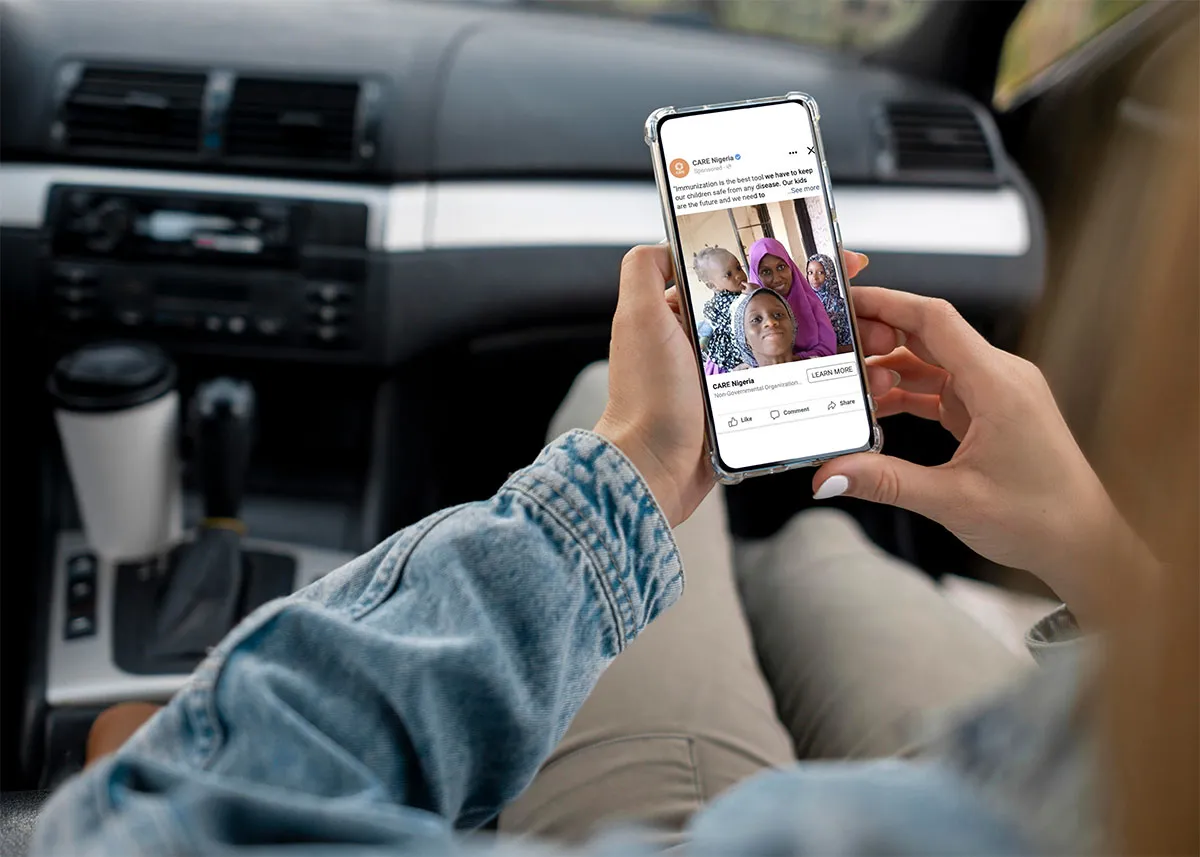TL;DR: After three years of experimenting with social media as a way to effect public-health behavior change, CARE has put together a resource guide to help others use social media advertising to make a difference in people’s lives.
- Built by practitioners, for practitioners, CARE’s playbook, Using Social Media to Drive Public Health Outcomes, shares a step-by-step guide to building effective campaigns to drive social change
- Learn online through a series of video lessons on our web version of the playbook.
- The playbook incorporates CARE’s lessons learned and case studies from the 60+ campaigns run since 2020.
Social and behavior change communication (SBCC), or the strategic use of communication approaches to shift knowledge, attitude, behavior, social norms, or beliefs, was not new to CARE. Our staff has delivered SBCC campaigns through one-on-one, one-to-few, and one-to-many conversations in villages and communities to increase awareness about public health, gender-based violence, economic resilience, food security, climate change, and education. Scaling SBCC campaigns to entire regions through social media, however, was a new endeavor.
CARE’s playbook guides readers through the steps to launch, run, and evaluate a social and behavior change communication campaign through Meta’s advertising platform. CARE’s web version of the playbook also offers a series of video lessons.

